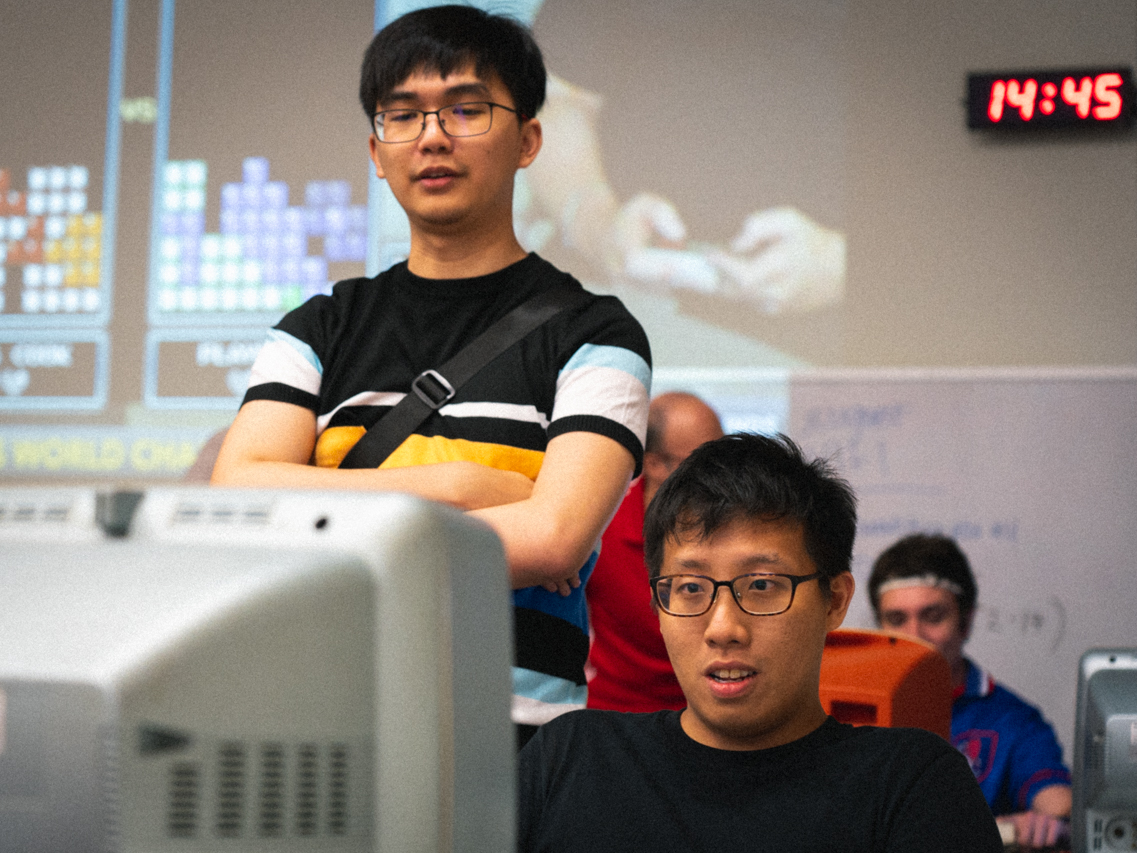Next to me, my photographer mutters angrily: “What the f*** is this guy doing?”
We are not watching a live EPL game or the climax of a movie. We are watching a game of 1 v 1 Tetris.
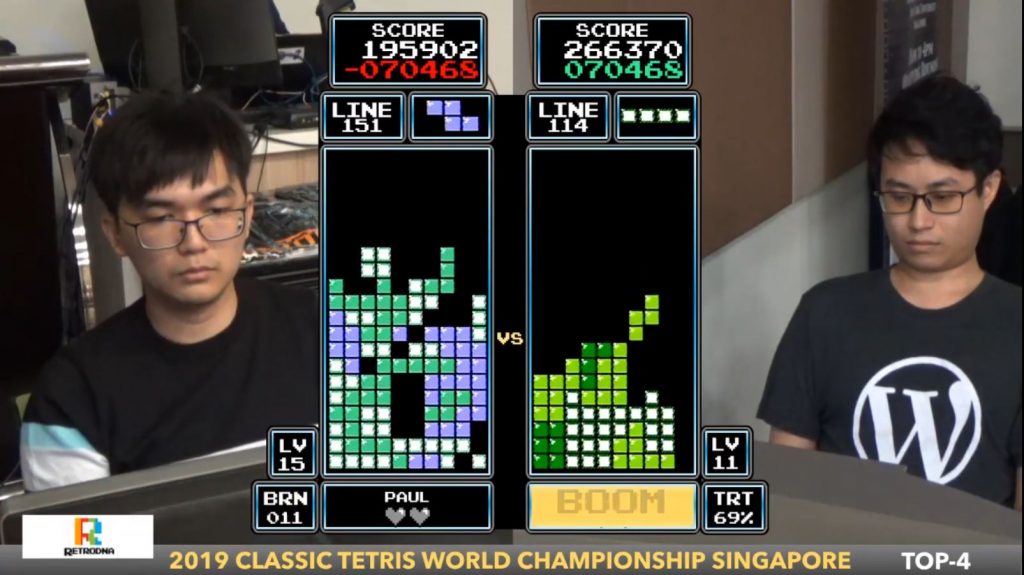
There is a sense of mild outrage in the air. The commentator chides Paul for ‘playing with fire’. On the Twitch Stream, the fans are even harsher. They chastise him for giving them ‘anxiety’ with his ‘D I R T Y Tetris’.
For a while, he survives by clearing lines in the nick of time. But when an L-shaped piece lands badly, all the fight seems suddenly gone. Everyone in the room winces in unison. Everyone knows it’s the end. Within a few seconds, Paul is beaten by the 2016 Tetris Champion, Mingshin, who had finished more than 200,000 points below him in the qualifiers.
Round one goes to Ming Shin.

Hence, I was surprised to learn of a ‘Competitive Tetris World Championships Singapore 2019’. I also couldn’t believe the tournament’s grand prize: a round-trip to Portland, Oregon, where the winner would represent Singapore in the World Championships.
Naturally, I signed up.
The competition is already in full swing when I arrive on Saturday morning, so I sit down, picked up a controller, and press start.
Approximately 2 minutes later, I put down the controller, stand up, and leave to buy some coffee. After 5 games, I place second-to-last with a high score of 409 points.
By contrast, Paul, the top player has a score of 572,500 points.
MAJ_bloodloss, the last-place competitor, is nowhere to be found. But then again, I would have fled the scene too if someone recorded my final score of 3 points. As it turns out, Competitive Tetris is as far removed from regular Tetris as you are from Roger Federer or Tiger Woods.
The problem is speed. At Level 1—your grandmother’s speed—the Tetris pieces fall so slowly you can take a sip of coffee before deciding where to put them.
At Level 9, the official speed of the qualifiers, things move too quickly for you to think. Split-second decisions are necessary and you need to start moving as soon as the piece starts its descent. Hence, most players at JCU are watching the next piece before the current one has safely landed. Just as Chess Grandmasters speculate three moves in advance, Tetris pros need to plan ahead.
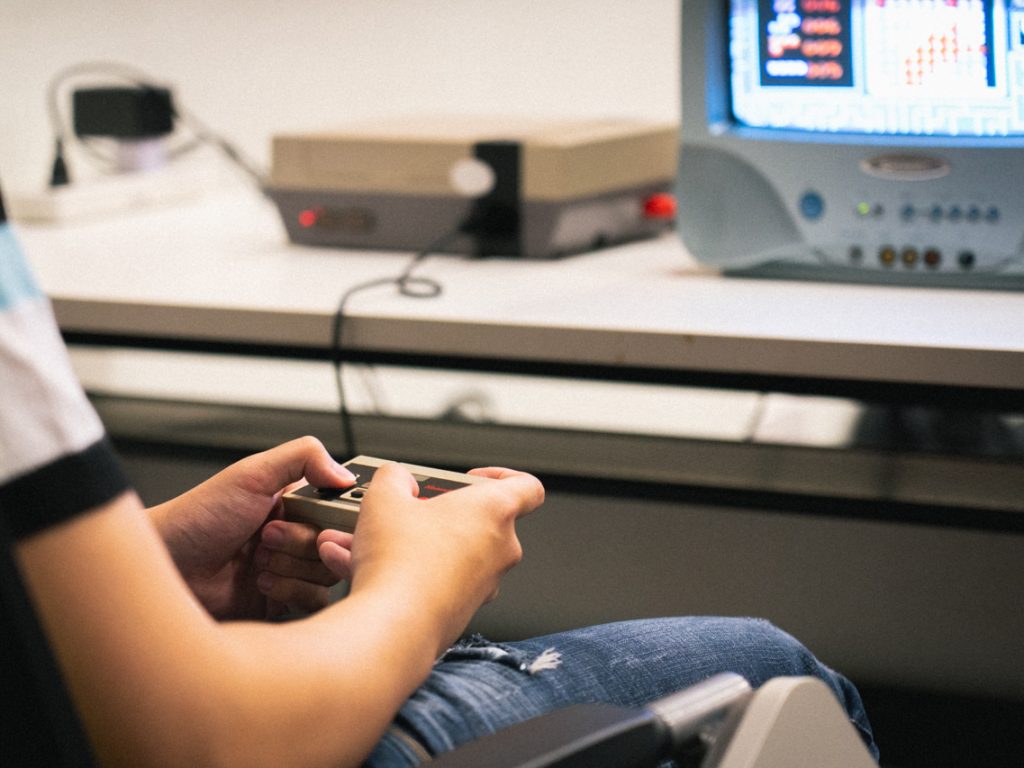
However, it is not just speed and reflexes that separate the Tetris champs from the Tetris chumps like me. After all, the aim of competitive 1 v 1 Tetris is not to outlast your opponent, but to achieve a higher score. The only way to do so is to ‘Tetris’—i.e. clear 4 lines at a go with the long piece. Achieving ‘Tetris’ gets you 4x the amount of points for clearing 3 lines, and 12x the points for clearing 2 lines.
In the words of 7-time champion Jonas Neubauer, it is by far the ‘most efficient’ way to score points.
In order to Tetris often and with ease, you must first understand some Tetris jargon, which Paul and Bryan—the third seed—are happy to explain.
Since ‘long pieces’ are the only way to Tetris, you must build ‘wells’ in anticipation of their arrival. A well is a gap that is one-block across and at last four blocks deep. It looks something like this:

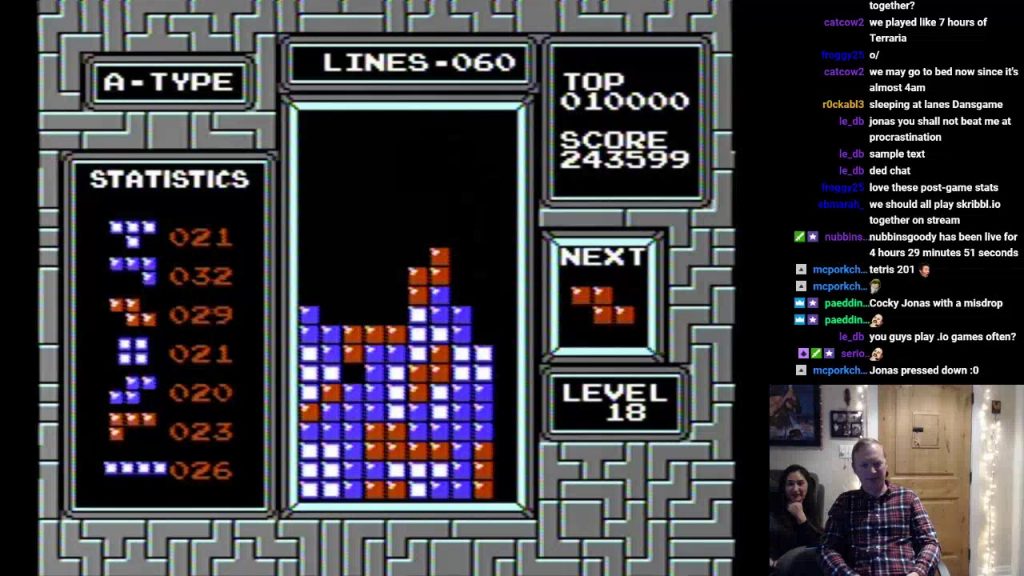
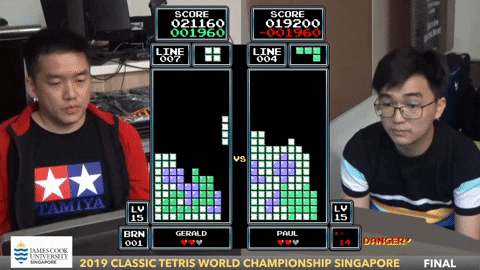
In competitive Tetris, this is known as a ‘drought’. Droughts can quickly become dangerous because, at higher speeds, a tower of pieces that covers 80% of your screen will prevent you from moving your pieces to the far left or far right, where you need them. Many a skilled player has perished waiting for a long piece which never arrived.

Bryan, who has finished playing, joins us and asks for advice: “What do you do when the stack is reaching almost the top? Should you always hold out for Tetris?”
“You can’t do that, that’s kinda like playing poker and hoping you’ll get a flush on the final card,” Paul replies.
In other words, that’s not playing, but praying. And therein lies the crux of being a good Tetris player. You must know when to hold em’ and when to burn. Burn too many and you’ll never catch up to the opponent who with a higher ‘Tetris Rate’. Burn too infrequently and you are at risk of ‘topping out’—i.e. reaching the top and ending the game.
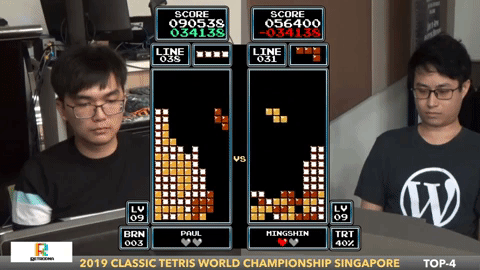
I’m simplifying, of course. There’s more to competitive Tetris. ‘Cleaning the board’ means to ‘burn’ lines in order to remove gaps from your mould. When your ‘garbage’ is cleared, you are said to be ‘ready for Tetris again’. A ‘tuck’ is when you slot a piece into a gap below an overhang. A ‘spin’ is when you rotate a piece at the last possible moment to make it fit perfectly. Most players prefer to build their wells on the right-side because the NES rotation is system is biased towards the right, and it gives you a few extra milliseconds of manoeuvring. This, as Paul explains, is because some pieces—like the L-shaped pieces—are asymmetrical so there is no central axis.
If this mess of information is making you crave aspirin, imagine what it’s like for Paul and Bryan. When a piece appears, they have about half a second to choose between ‘stack’ and ‘tuck’, between ‘burning’ or ‘waiting’. One wrong move and you might never come back.
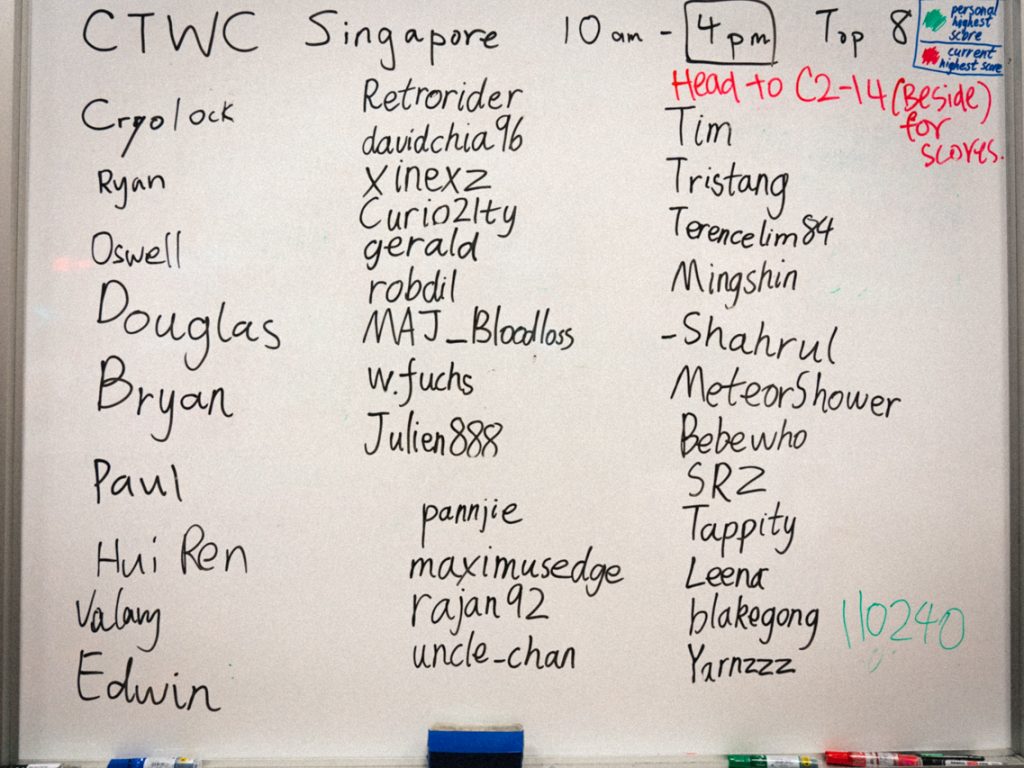
Paul, on the other hand, does not own an NES. In fact, he never touched an NES controller until earlier this morning. For the past 6 months, he has been training on a keyboard.
I do a Scooby-Doo double-take. Did you say 6 months?
Apparently, I did not mishear.
Paul was sucked into competitive Tetris by a meme. Specifically, the Boom! Tetris For Jeff meme from the 2016 CTWC finals. From there, Paul—who is mainly a CS: GO player—headed to Youtube, where he found the exciting Jonas v. Joseph finals of 2018, and tutorial videos teaching him the basics of good Tetris. He had always been a gamer, despite his parents’ occasional disapproval.
70,000 points is quite a sizable gulf in high-level Tetris, but that’s cold comfort when you’re watching Gerald play. Even at Level 18, where most people die within mere seconds, he remains composed and confident. Other players lean forward in their seats, scowl, and sigh impatiently when their Tetris goes badly. Gerald, however, slouches in the hot seat like a bored teenager, as if JCU were his own living room.
Without turning away from the game, Paul whispers: “I have a feeling it’s going to be me and him.”
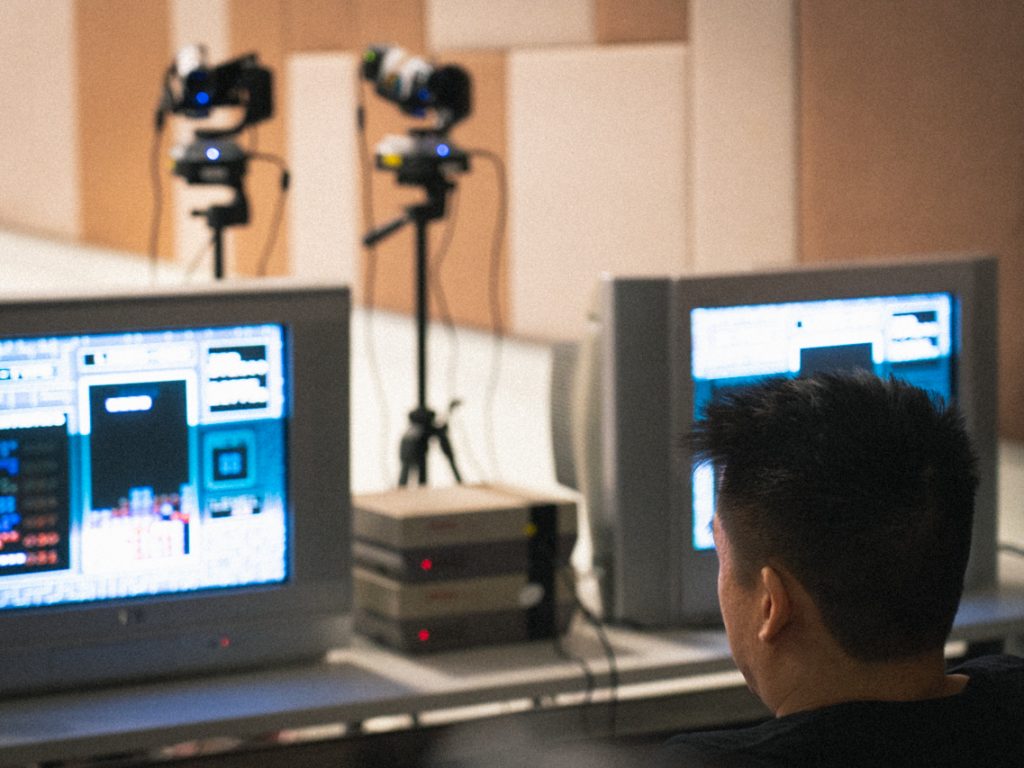
In the semi-finals, Paul concedes the first game to Ming Shin, but wins the best of three. However, the 2-1 is a close shave he barely survives with a 1000 point lead. His final victory—which seemed like a done deal in the qualifying stages—now seems shaky and uncertain.
The final showdown is a best of five between Paul and Gerald. It begins badly for Gerald, who quickly lags behind with a board full of holes. For normal players, it would be a death sentence. They would lose heart, do the ‘Tetris head-shake’ of despair, and eventually concede after a few more half-hearted comebacks.
Gerald, however, is far from average. He plays on, calmly burning line after line until the jagged skyline of his Tetris board once again resembles the smooth flight deck of an aircraft carrier.
The Twitch audience is suitably impressed. They praise him for playing ‘A E S T H E T I C Tetris’.
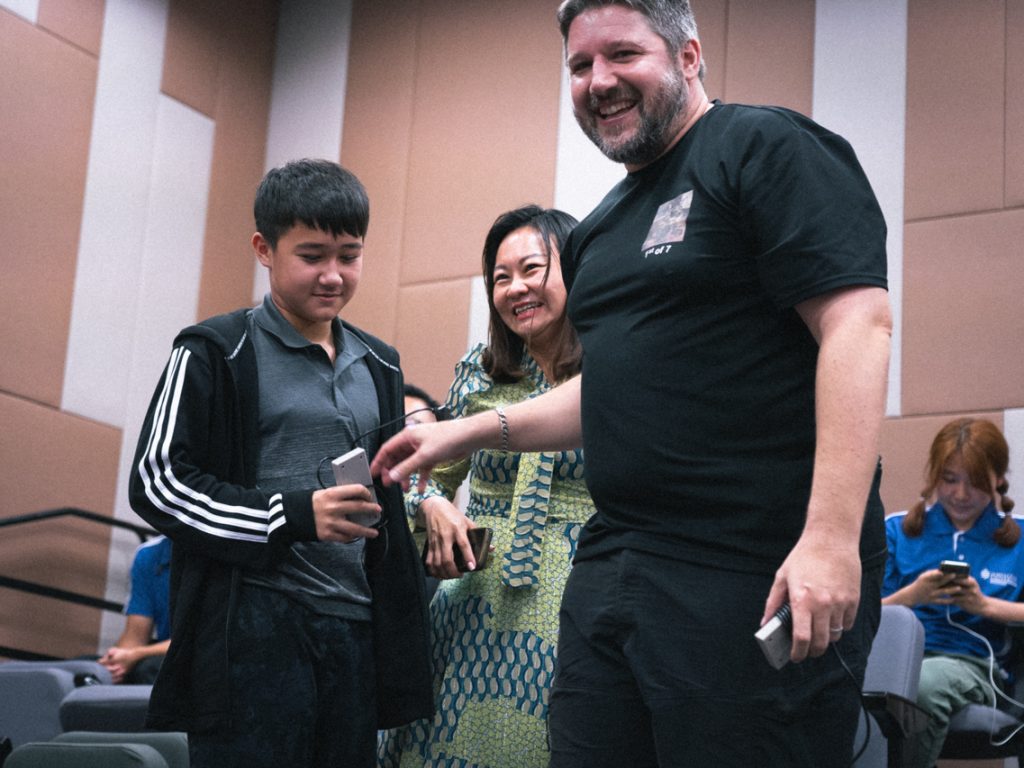
Mr Dixon Wu, the event organizer and a video games lecturer at The Open University of HOng Kong, compares Tetris to Formula-1 racing. His analogy is spot on. The Tetris champions hug the curve so tightly that you can smell the burning rubber. They build towering babels with deep wells ready for the long-piece, burning just often enough to keep themselves from ‘topping out’. You don’t want them to crash and burn out but you know that someone eventually will. The thrill comes from watching them escape, again and again, knowing that each time might well be their last. One fine day, the pieces will fall a bit too fast for them to handle, and all the risky moves will come back to bite them—and end them.
After the many close calls and razor-thin margins of the day, this final match feels a little anticlimactic, truth be told. Paul is playing at his best, and he takes an early lead over Gerald, who just can’t seem to get into the flow of things. It’s a close match, but nowhere as close as the semi-finals. Gerald manages to stay alive but it’s game over when he reaches level 20 with a 100,000 point deficit. After a few bad moves which left his board looking like a ‘cat’s condo’, it is the end.
Final score: 365,427 v. 446,420—in Paul’s favour.
He leaps from the chair and the audience erupts in applause. All around, people are shaking their head in amazement and exhaling with relief. Online, the chat is a constant stream of ‘GG’s and ‘Congrats Paul’s’.
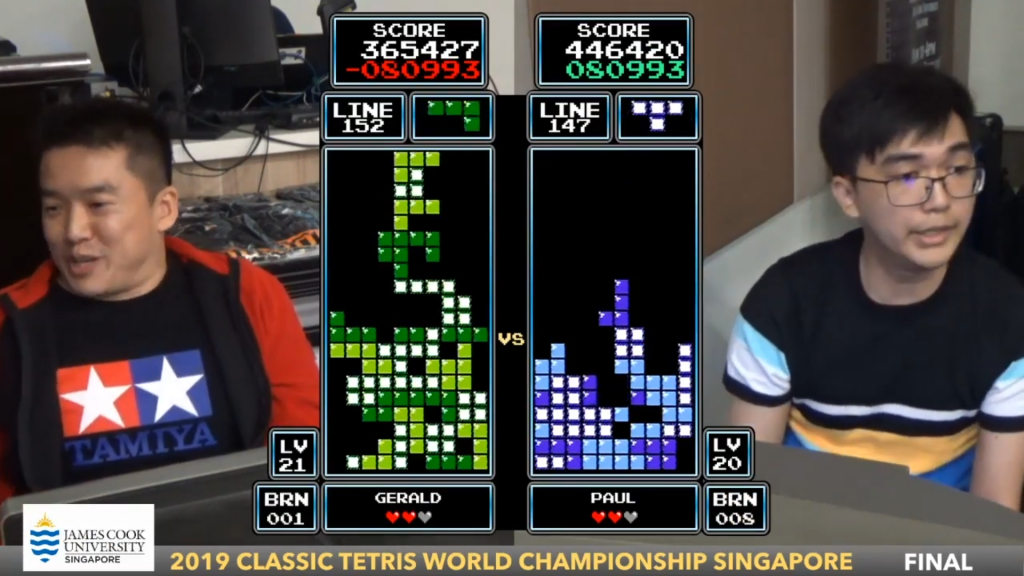
Fearing a dereliction of basic journalistic duties, I run after him.
Outside the auditorium, the afternoon has faded into dusk. Paul is pacing about, replying to messages. When I offer my congratulations and jokingly scold him for giving everyone a heart attack, there cracks what must be his first grin of the day.
“Yeah, I very nearly killed myself against Mingshin, I was way too aggro,” he said.
In Oregon, the competition will be brutal but I can’t imagine not tuning in. I had signed up as a lark, but I’m totally hooked. There is nothing more beautiful, or more pleasurably-tense as a game of Tetris.
Do let your dreams be memes.
The Competitive Tetris World Championships will take place 18th – 20th October in Portland Oregon. You can check out more Tetris at CTWC’s official Twitch channel.

